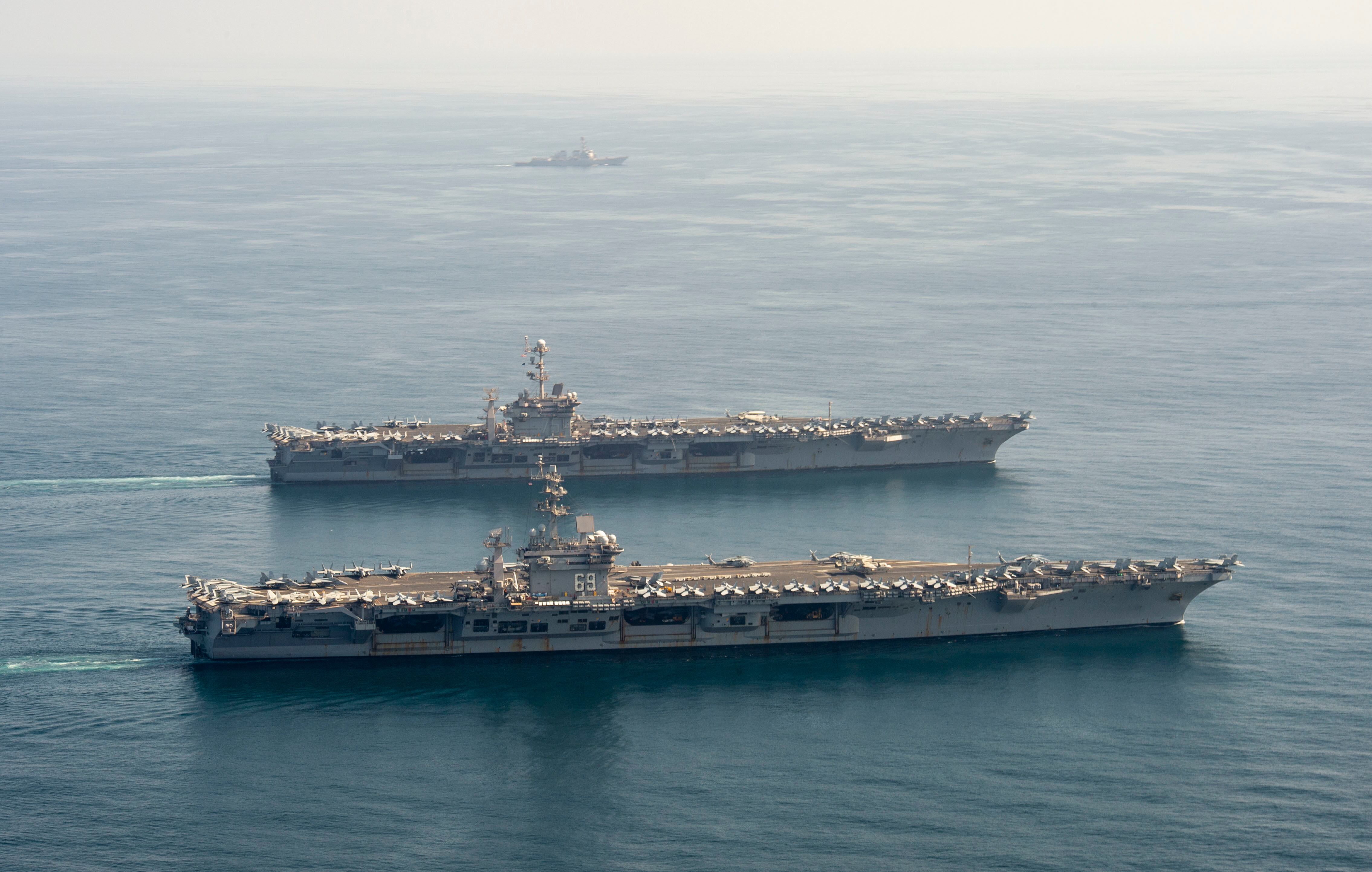WASHINGTON — Amid heightened tension with Iran, the U.S. Navy is operating two carriers in the Middle East, and all signs point to increasing pressure from U.S. Central Command to maintain aircraft carrier presence that has ebbed in recent years as the U.S. focuses on competition with China and Russia.
The Navy announced March 20 that aircraft carriers Dwight D. Eisenhower and Harry S. Truman, and their respective escorts, are operating with a B-52 bomber in the Arabian Sea to demonstrate “combined joint capability and interoperability to plan and conduct multi-task force operations in the U.S. Central Command area of responsibility.”
The image of two carriers operating together in the Arabian Sea recalled the late-2010 decision by then-CENTCOM head Gen. Jim Mattis to force the Navy to surge two carriers to the Arabian Gulf as the Obama administration pursued a carrot-and-stick approach to force Iran to the negotiating table over its nuclear program.
The two-carrier presence requirement in place for more than two years exacted an enormous toll on the service, with Navy leaders warning it was unsustainable.
RELATED
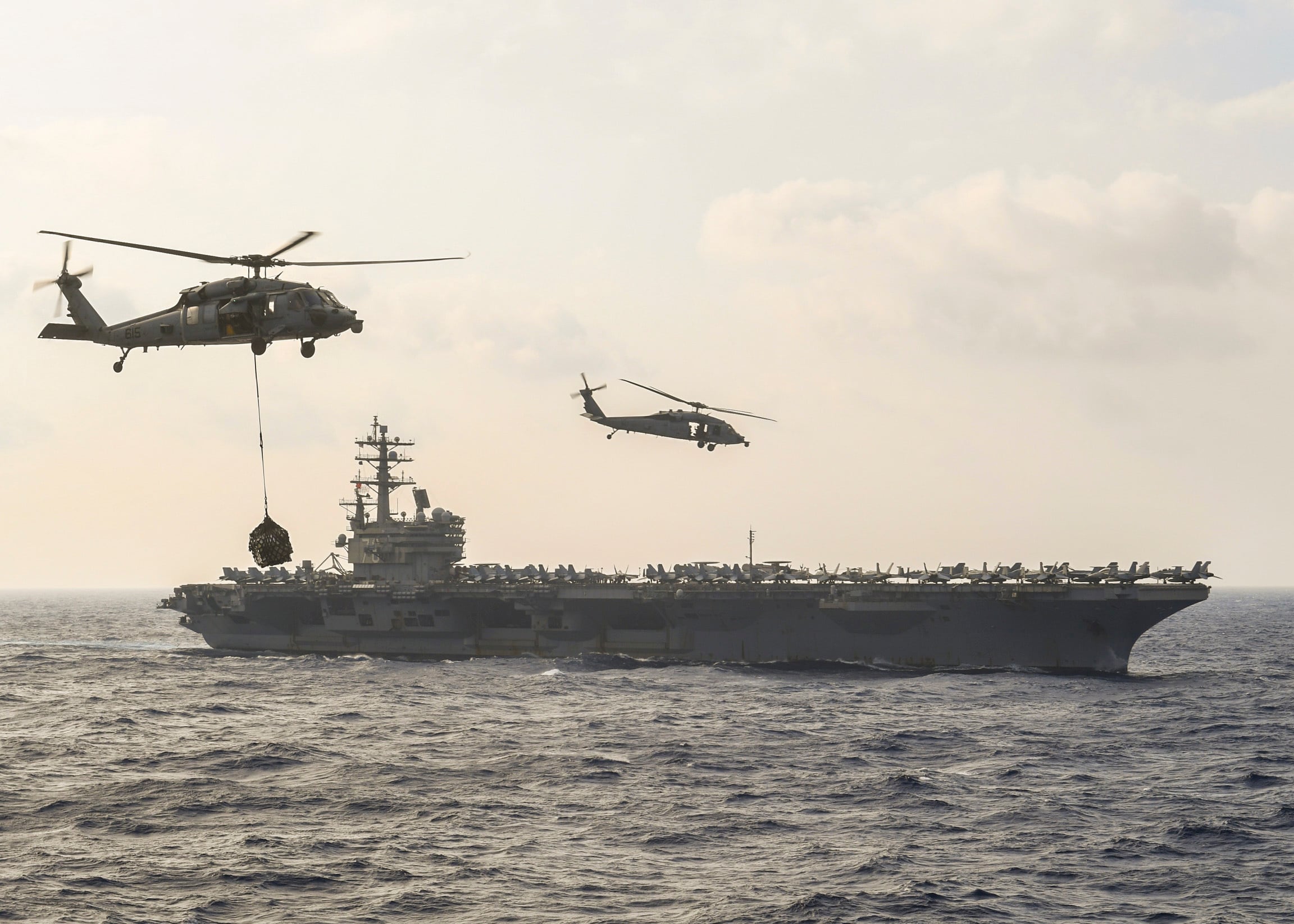
The two-carrier presence nearly broke the Navy’s ability to project power with its carriers and sent deployments skyrocketing to nine months and more as the readiness accounts depleted to dangerous levels. Now, with tensions escalating over rocket attacks on U.S. bases that have killed American personnel, the Navy is once again being asked to show the flag.
But some experts and former senior Navy officials warn there is very little evidence that Iran is deterred by the presence of two carriers. Though they do note there’s ample evidence that the deployment draws forces away from operations aimed at deterring China and Russia — something on which the U.S. is supposed to focus per its National Defense Strategy. Furthermore, they told Defense News that the payoff for maintaining two carriers in the region may not be worth the stinging toll it exacts on Navy readiness, adding that pursuing such as strategy will reverse the hard-won readiness gains of recent years.
During testimony on March 10, Central Command head Gen. Kenneth McKenzie told House lawmakers that the aircraft carrier “has a profound deterring affect principally upon Iran.”
“They know what the carrier is. They track the presence of the carrier. And I view a carrier as a critical part of a deterrent posture effective against Iran,” he said.
McKenzie went on to tell lawmakers he believes that the reduction in Navy carrier presence in early 2019 and years prior may have contributed to the latest cycle of escalation from Iran that came to a head with the U.S. assassination of Iranian Revolutionary Guard commander Gen. Qasem Soleimani and a retaliatory strike from Iran on U.S. bases in Iraq.
“It is my best judgment that we have reestablished a form of rough deterrence — what I would call contested deterrence — with Iran in the wake of the striking of Qasem Soleimani and the attack on our bases,” McKenzie said. “And part of that is based, and part of that deterrence is obtained by our obvious force presence in the theater — force presence that was not there in the spring of 2019 that led them to undertake the cycle of violence that culminated in January.”
But some experts question the conventional wisdom that carriers in the region deter Iran, pointing to the very fact that Iranian malign activities in the region continue despite the presence of carriers.
RELATED
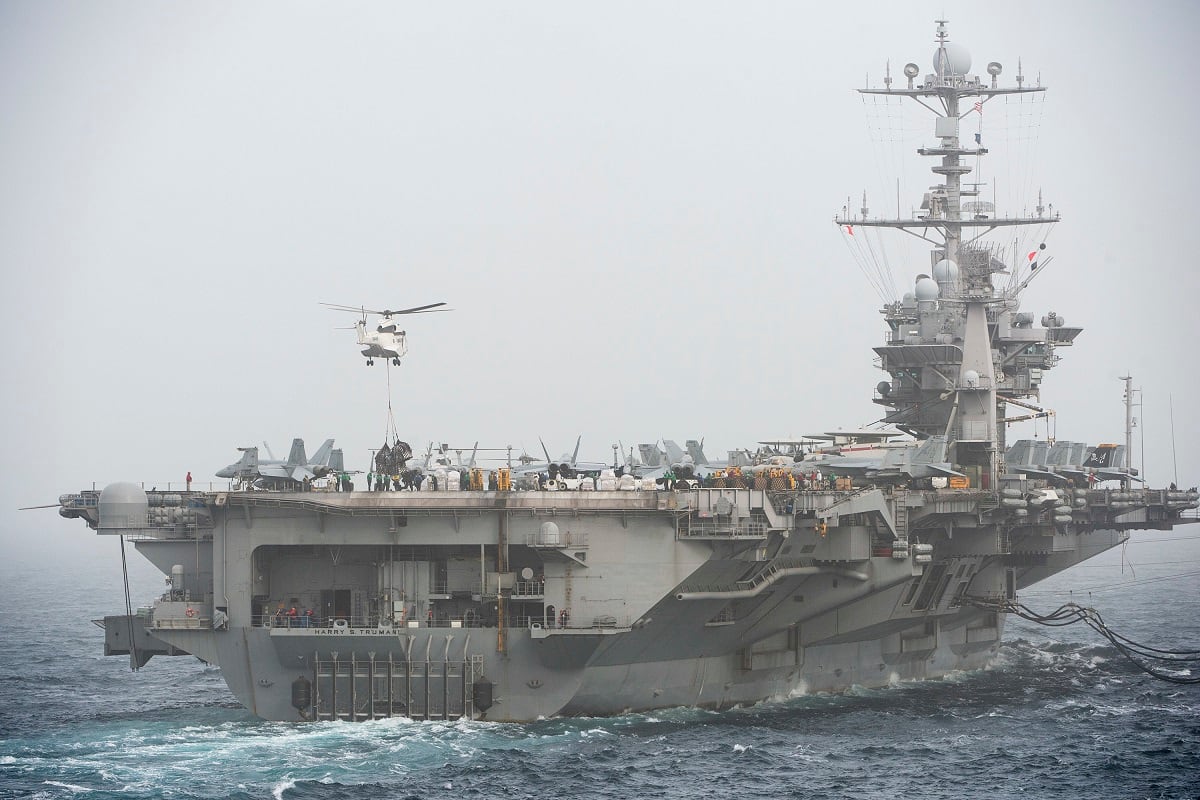
“It’s an asinine strategy,” said Bryan Clark, a former senior aide to the chief of naval operations and now a senior fellow at the Hudson Institute. “The Iranians don’t perceive carriers and a threat to their ability to project power because they project power through gray zone activities and terrorism — the kinds of things that carriers aren’t very good at dealing with."
“And when they are inside the Persian Gulf, the Iranians perceive them as being an easy target. They can range the entire gulf with shore batteries along the coast in caves and other terrain where it’s hard to root them out," he added. “So the Iranians see the carrier as a way to get the Americans to spend a lot of money on a show of force that doesn’t really impact their strategic calculation.”
Kaleigh Thomas, an analyst with the Center for a New American Security who focuses on Iran, agreed, saying that the escalation of violence between the U.S. and Iran despite the presence of the Harry S. Truman Carrier Strike Group, which arrived in the region late last year, would seem to point to the limited value in carrier deterrence.
“It adds little value, especially if you look at just the slice of history that is this past year,” Thomas said. “The U.S. already sent a carrier group, and if that wasn’t a deterrent against Iran given the escalatory actions taken by Iran over the past couple of months, I don’t see how maintaining those carriers there for an indefinite period of time is somehow the defining feature of a successful deterrent strategy.”
In a phone call responding to a query for this story, a CENTCOM spokesman referred to McKenzie’s statements in testimony.
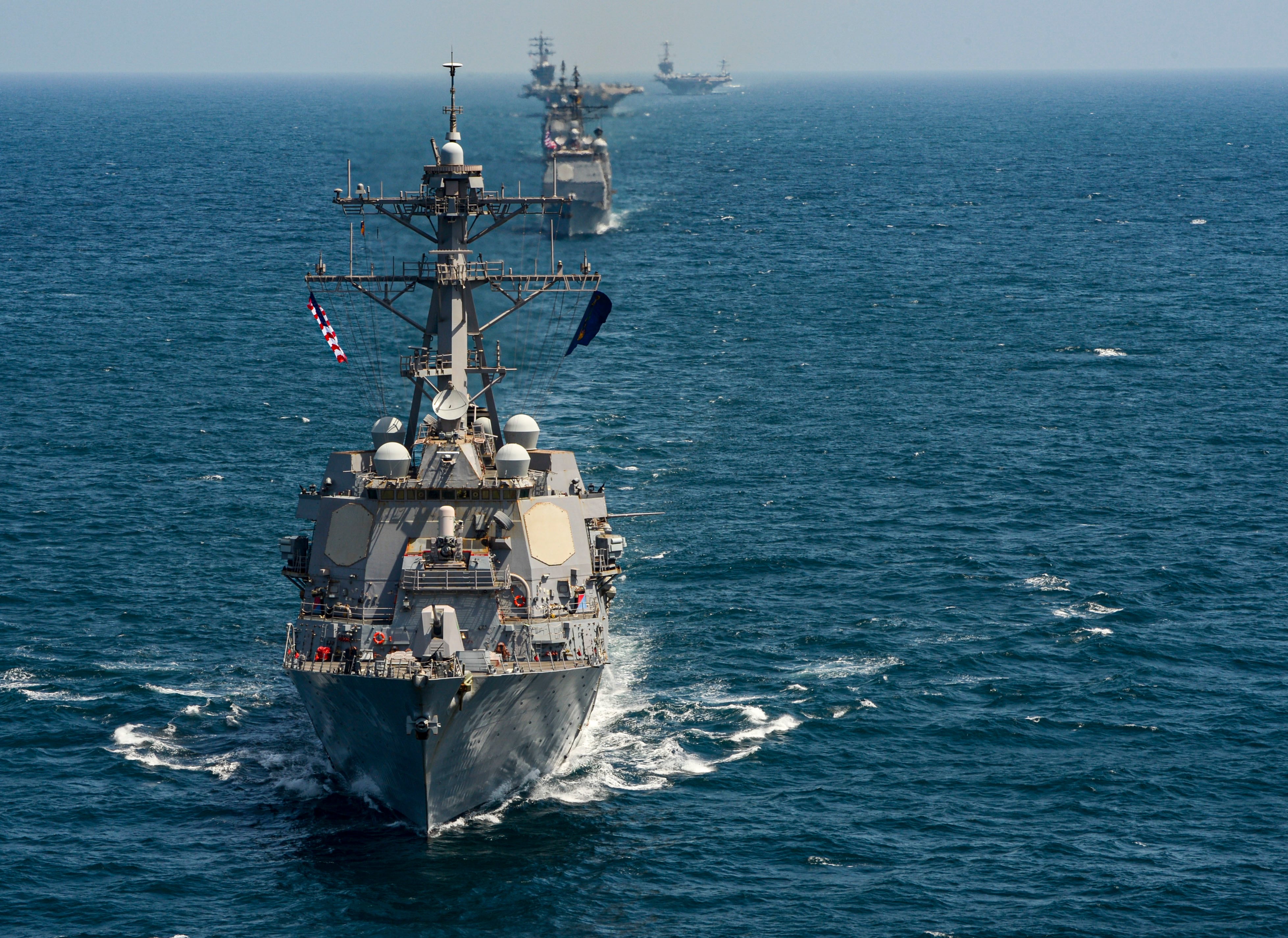
A blow to readiness
Perhaps more seriously, trading the hard-won readiness gains for a dubious carrier-based deterrence strategy could send the Navy back into the readiness troth created by Mattis at the beginning of the last decade.
Mattis fought for and received a two-carrier presence in Central Command at the end of 2010, a program that ended in early 2013, when the Navy successfully argued that continuing a two-carrier presence was not affordable with sequestration cuts hitting the force.
The requirement sent deployments skyrocketing from six and seven months to nine and 10 months. The George H.W. Bush Carrier Strike Group in 2014 was deployed for 9 1/2 months, for example. There are already signs that increased demand for carriers in the Middle East are taking a toll, with the Abraham Lincoln Carrier Strike Group recently returning from the longest deployment in the post-Vietnam War era.
During the early 2010s, long deployments and regular surge deployments wore out the ships, aircraft and sailors, creating huge readiness gaps that took years to recover from, Clark said, warning that a return to that posture would have significant consequences.
“The carrier schedules are going to be such that they may not be able to make, or take full advantage of, their maintenance periods,” he said. “And then you’re going to see the kind of cascading effects on carrier readiness that will take years to dig out of.
"Really it has only been in the last nine months that the Navy has managed to shake the lasting effects of that readiness troth.”
Former Navy Secretary Ray Mabus, who presided over the readiness shortfalls created by Mattis’ two-carrier requirement, told Defense News in a March 20 interview that pushing for two carriers now means that down the line those carriers won’t be there when perhaps the need is urgent.
“When Mattis was CENTCOM commander, he demanded [two-]carrier presence and got it, and it messed up the carrier rotations for years,” Mabus said. “If you go [with a two-carrier presence] now, you are guaranteeing yourself a gap later on."
“And then the question is, what does a second carrier give you that one carrier does not? One carrier gives you an immense capability. Having a second carrier — maybe you double the firepower, but for what? If one carrier doesn’t deter Iran, I’m not sure two does," he added. “But it’s the long-term thinking that matters most here because you will mess up the carrier strike group rotations literally for years.”
RELATED
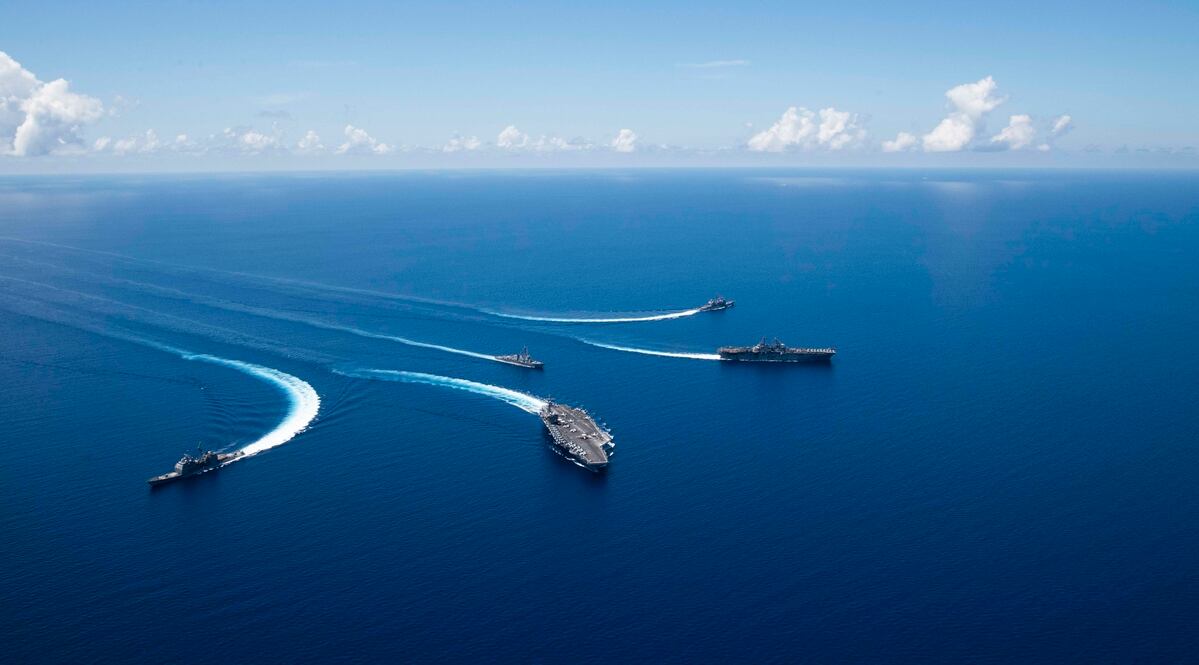
In the years following Mattis’ presence surge, the U.S. allowed long gaps in carrier presence in the Middle East. In 2018, USNI News reported that carrier deployments were at a 25-year low.
The U.S. technically has 11 carriers, but only eight are available for tasking at any given time. The Gerald R. Ford is not yet certified for tasking, one carrier is always in its midlife complex overhaul and refueling, and at least one other carrier is in an extended maintenance period. So among the eight remaining carriers, the fleet must provide under normal circumstances a carrier for the Middle East and a carrier for the Asia-Pacific region.
The Asia-Pacific region is covered for six months every year by the forward-deployed carrier Ronald Reagan out of Japan, but U.S.-based ships must make up the other half. And if the Pentagon doesn’t want to leave the Pacific uncovered for large swathes of the year with two carriers in the Middle East, the Navy will need to maintain between two and three U.S.-based carriers deployed year-round — an immense burden on a fleet of eight aircraft carriers.
A demand to maintain two carriers in the Middle East on even a semi-regular basis would force the fleet to take extraordinary measures, Clark said.
“You’re going to need at least an extra deployment every year out of the remaining force," Clark said. “That means that in the sustainment phase, you are going to need to double pump carriers maybe once but probably twice per year, meaning that ships returning from deployment would have to be surged in the months following to maintain the desired presence levels.”
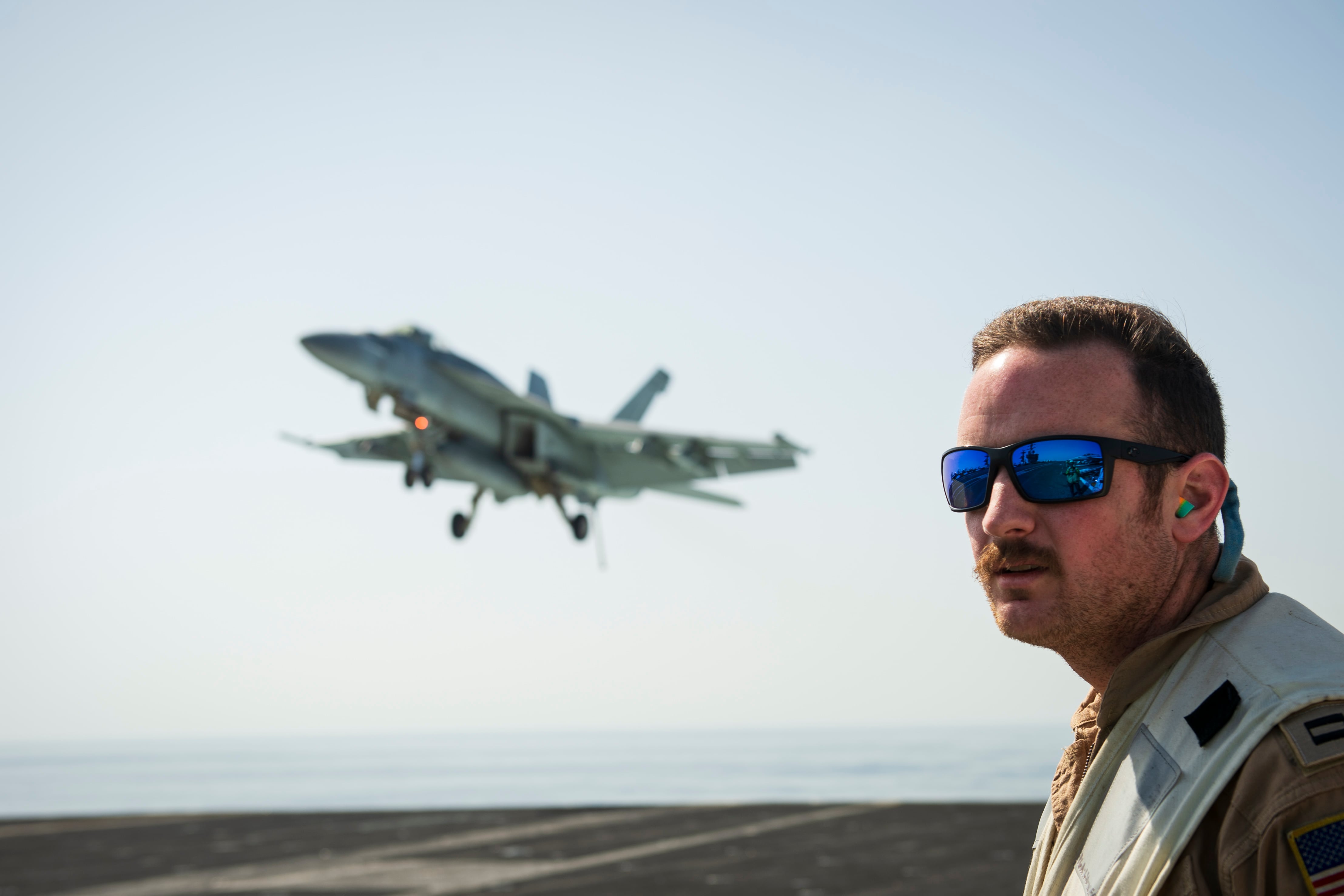
The impact falls especially hard on sailors and their families, Mabus said. That’s because while the Navy scrambles to fulfill a burdensome presence requirement with a diminished carrier fleet, maintenance delays and equipment casualties can make schedules highly unpredictable.
“It’s a huge hit on morale for sailors and their families,” Mabus explained, “because sailors are willing to do just about anything. But first they need to know why, and second they need to know: ‘If we’re going to have to stay out for nine months, let us know we’re going to be out for nine months. We can plan for that. Our families can plan for that.’
“The stress you put on sailors, the stress you put on equipment, the aircraft, the weapons systems: That’s why [former Chief of Naval Operations Adm. Jonathan] Greenert and I argued that you have a pretty specific timeline — here’s when we’re going to do maintenance, here’s where we do certifications, here’s where we’re going to do workups, here’s where we are going to deploy.”
The Navy should always stand ready to provide the forces the combatant commander needs, so long as they actually need it, Mabus said.
“Underpinning all of this is that the world gets a vote,” he added. “If there is an emergency, we’ll surge. We’ll do whatever’s necessary. But it’s about knowing why we’re doing it and knowing that you are guaranteeing yourself problems in the future.”
In his testimony, CENTCOM commander McKenzie told lawmakers he is “keenly aware” of the strain that meeting force-presence requirements puts on the service.
“I am keenly aware of the total burden that places on the Navy in particular and that joint force in general when they meet these requirements.
RELATED
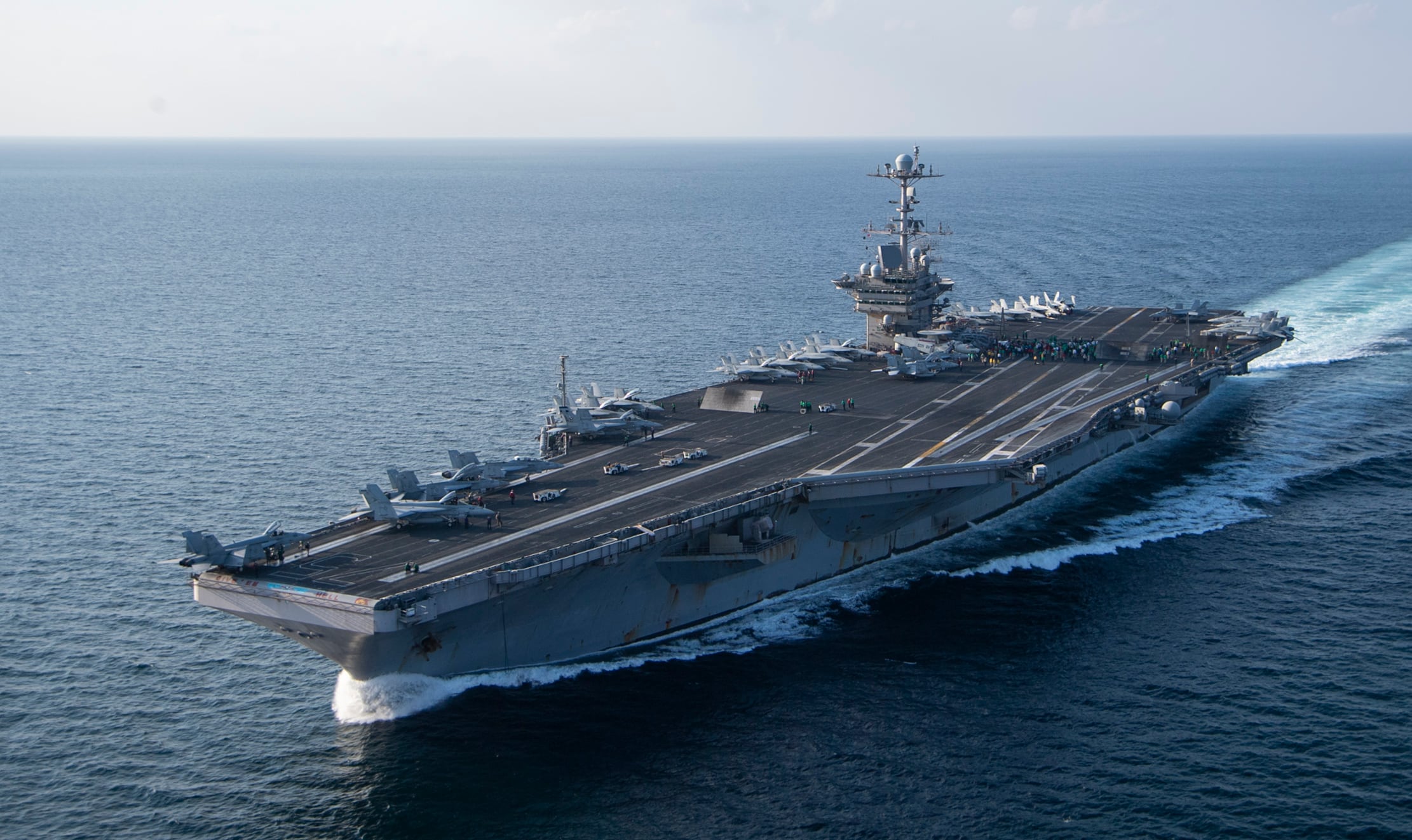
What about the National Defense Strategy?
Experts also raise questions about the beefy show of force in the Middle East and how it relates to changing priorities under the Trump administration’s National Defense Strategy.
“If we’re supposed to be focused on China and Russia, we’re doing nothing for either one of those with a [two-]carrier presence in the Middle East,” said Clark, the Hudson Institute analyst. “And arguably, we are giving China a freer hand in the Pacific because that carrier and its associated strike group are not there half the time.”
The National Defense Strategy calls for the U.S. military to focus on maintaining stability and not allowing a single power to dominate the Middle East. It also calls for the U.S. to “develop enduring coalitions to consolidate gains we have made in Afghanistan, Iraq, Syria, and elsewhere, to support the lasting defeat of terrorists as we sever their sources of strength and counterbalance Iran."
But sending a heavy presence to the region to counter Iran could be seen as less coalition building and more like U.S.-dominated security. Furthermore, the prescription doesn’t seem to match the security situation, said Thomas, the CNAS analyst.
From a strategy perspective, heavy naval presence has often been in the context of preventing Iran from attempting to close the Strait of Hormuz to oil tanker traffic, as it was when Mattis began the two-carrier strategy in 2010, Thomas said. But with the cratering price of oil, that threat would seem to be less of a concern, she added.
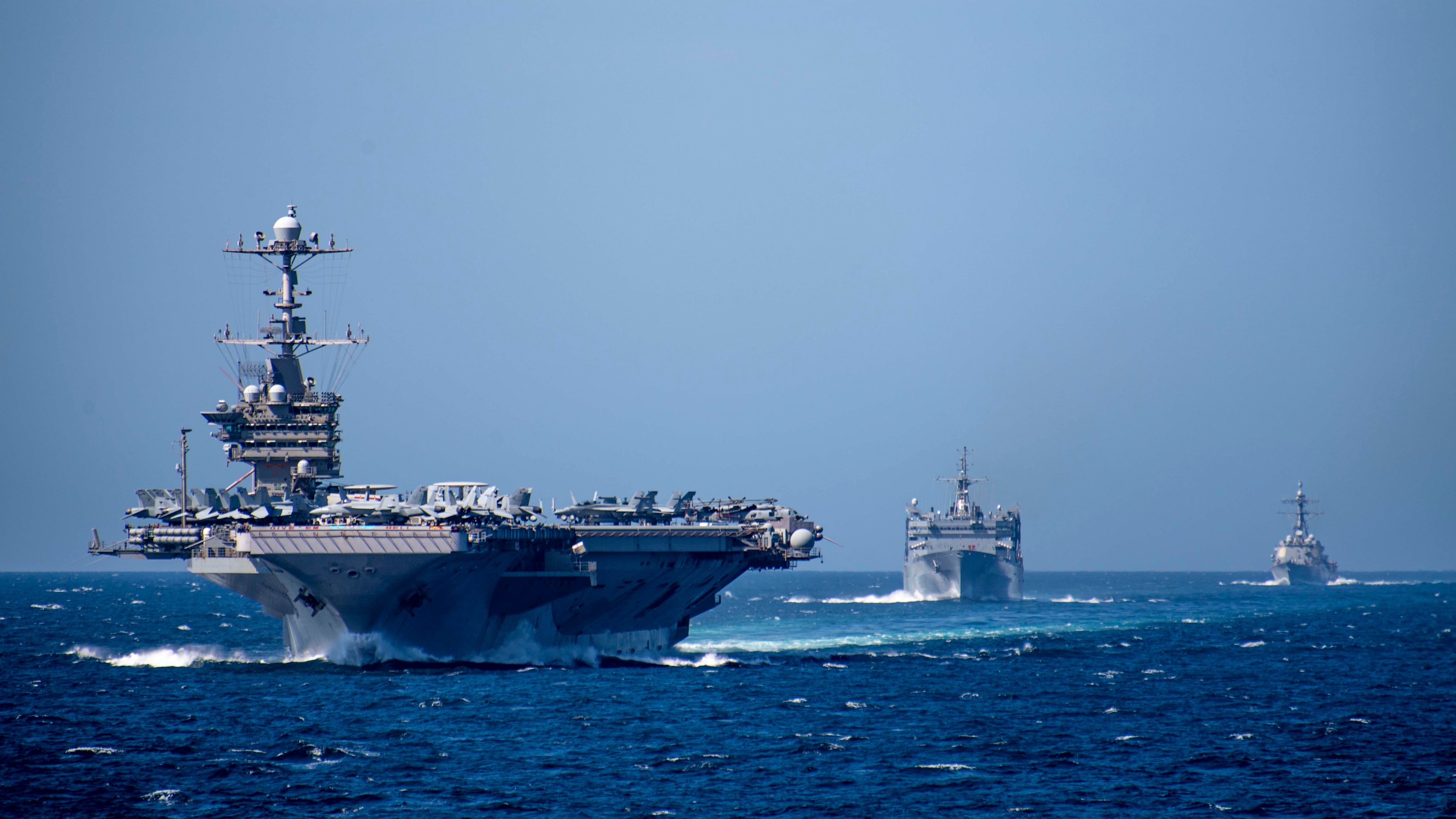
It also undercuts the message that the Trump administration has tried to send — that the U.S. is serious about getting Iran to the table to hash out a new deal, though the White House is undercutting major foreign policy objectives that go back several administrations. “It goes against this whole narrative that we are serious about negotiating with Iran and that we truly want a diplomatic solution, so our allies inside Iran begin to question our intentions,” she said.
“And then secondary to that, we are supposedly re-balancing and limiting our involvement in the Middle East — rethinking how we engage there. That’s been a goal of the past three to four U.S. presidents, and we haven’t been able to do that successfully," she added. “So we look at the National Defense Strategy and it says Asia is the top concern. It doesn’t seem like we believe it ourselves, so why would our allies believe it?”
For John Glaser, the director of foreign policy studies at the Cato Institute, the increased carrier presence is a continuation of a failed policy that is less about some vague sense of deterrence and more about compelling Iran to completely fold its cards and bow to U.S. demands.
“If you’re Iran right now, you are incredibly confused as to what the U.S. administration even wants,” Glaser said. “Trump has repeatedly sent the message that he would like to meet face-to-face with Iran’s leaders and hash out a new deal. At other times, he threatens to flatten the country with bombs. Many other principals in his administration are set on regime change.
“And if you take a look at the only specific set of conditions for relief from maximum pressure [as laid out by Secretary of State Mike Pompeo in 2018], what the U.S. is really trying to do is get Iran to capitulate, to forfeit efforts to build defensive weapons and to effectively stop having a foreign policy.”
Ultimately, the failure to achieve a breakthrough is unlikely to be reversed by increased carrier presence, Glaser added.
“Iran’s response to maximum pressure has so far been to rebuild some of its nuclear infrastructure and to lash out with increased violence in the region,” he said. “The tit-for-tat we have seen is Iran reacting to aggressive U.S. policies, and the U.S. not acknowledging the failure of the approach.
“They always say it’s a problem of ‘not enough deterrence.’ ”
David B. Larter was the naval warfare reporter for Defense News.
